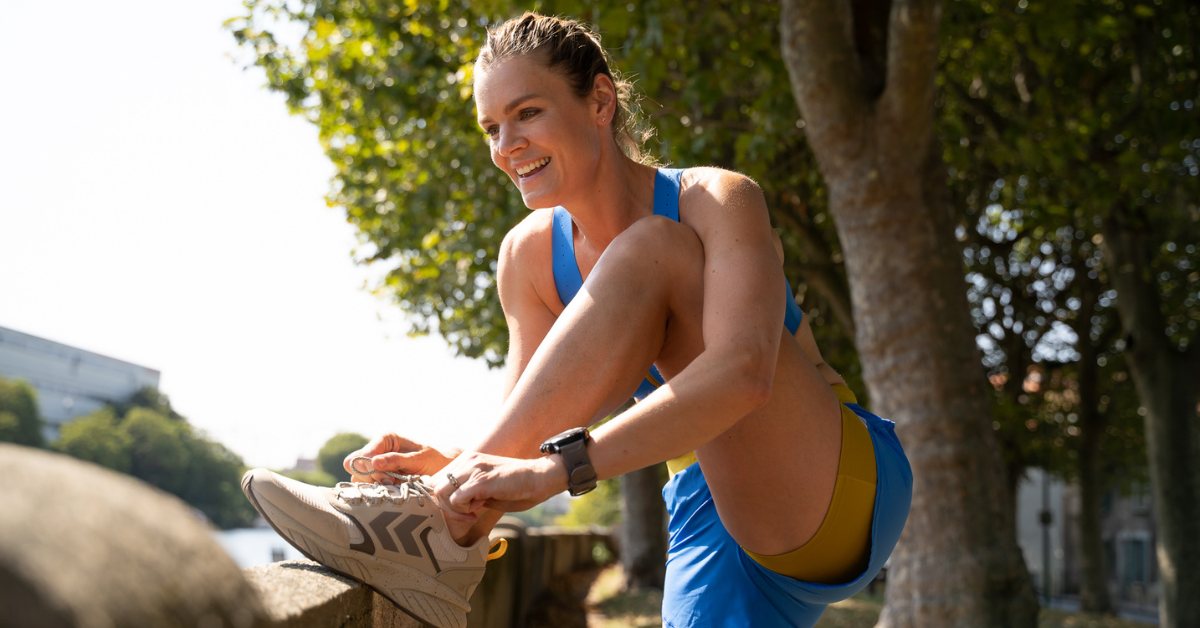
[ad_1]
Master and understand the different work areas endurance training should be taught to all athletes: from beginner to advanced. Between the concepts fundamental endurance, active endurance and VMA there is something to get lost in.
So here is an article which, I hope, can answer all your questions!
What is Fundamental Endurance?

Fundamental endurance is a pace in running (or in other sports such as swimming, cycling, rowing, etc.) that allows you to maintain an effort for a long period of time.
During this exercise, you are in easy breathing, that is to say, you are able to hold a conversation.
This notion of breathing is interesting to give especially when you start to run, and you have trouble finding the good running pace.
To know if you are in the right running pace, there are two methods. The first to calculate the running speed for each athlete. The second using heart rate.
How to know our endurance pace?
The calculation of the specific pace:
To work on fundamental endurance you must run at 65% of your MAV.
To calculate it, you can do the Demi Cooper test: the goal is to cover the greatest distance possible in 6 minutes and then divide this distance by 100.
Let’s take an example: Julie has a VMA of 15km/h. It must therefore run at 15 x 65/100 = 9.75 km/h. Running at 9.75 km/h Julie will complete a fundamental endurance session. However, if she had run at 11 km/h, the physiological impact would be different.
Each athlete has his own rhythm according to his abilities.
The calculation of heart zones:
To determine the specific cardiac work zone in fundamental endurance, I suggest you use the reserve heart rate method, also called the Karvonen method.
Let’s take Julie’s example again: she has a resting heart rate of 65 bpm, and a maximum rate of 200 bpm. To get its data yourself, you can use the formulas:
To run in the fundamental endurance zone, it must remain below 70% of its heart rate reserve (FCr).
To stay in fundamental endurance, it should therefore not exceed 159 bpm.
Which calculation to favor?
These two methods allowimprove your stamina and are complementary since they will allow you to vary your training sessions.
However, it is more precise to use the heart rate because the instantaneous speed given by the GPS often varies according to the network with the satellites and the latency time.
The difference with active endurance

In endurance racing, you have certainly heard of active endurance. This notion brings back to a racing pace higher than the fundamental endurance (EF). Running well requires mastering the different running zones.
The notion of active endurance (EA) implies running speed more expensive than work in EF.
What are the benefits of Fundamental Endurance ?
The benefits of fundamental endurance are numerous!
This pace makes it possible to target lipolysis. In other words, it is particularly interesting for people who want to lose weight. So, no need to run every day, rather look for the right intensity to progress in running.
In addition, it is the ideal pace for improve your stamina, since the labor intensity is low. You can take advantage of this session to improve your breathing, change your pace, learn how to better use your arms, your feet… The benefits of running are not only physiological.
From a social point of view, this type of training can be done with several people, and you can take the opportunity to discuss it, especially if you have the same pace. Also take the time to observe the landscape and nature, which is rather difficult during a VMA session or a change of pace where you are trying to run faster.
Learn the basics of running
Learn or relearn the basics of running to improve your endurance and enjoy all the benefits of fundamental endurance!
When to run in fundamental endurance?
Fundamental endurance is at the base of the runner’s progression pyramid. We hear about the land base in the world of running. To create this base which must be solid, you are certainly wondering how long does the fundamental endurance session last ?
For beginner runners?
For a beginner runner, it is not easy to run for a long time. Two reasons explain this.
First of all, our muscles are not used to working over time. This is why, it will be necessary to respect the principle of progressiveness in your training. To do this, you can alternate walking and running phases to last over time.
But especially when you start, you tend to leave too quickly and therefore get exhausted quickly. The notion of breathing ease takes on its full importance in controlling the intensity of jogging. Do not try to run an hour in one go overnight but rather follow the progress over 4 weeks.
Each session must be performed at 65% of the VMA if you know it or at 70% of the reserve heart rate.
| Session 1 | Session 2 | |
|---|---|---|
| Week 1 | Alternate 4′ run / 3′ walk – Repeat 6x | Alternate 6′ run / 2′ walk – Repeat 4x |
| Week 2 | Alternate 5′ run / 3′ walk – Repeat 6x | On 40′: do 10 squats every 5′, then walk 1′ |
| Week 3 | Alternate 6′ run / 3′ walk – Repeat 6x | On 45′: do 10 mini squats every 5′, then walk 1′ |
| Week 4 | Alternate 8′ run / 4′ walk – Repeat 5x | Over 50′: do 6 lunges every 5′, then walk 1′ |
For advanced runners
For runners who easily train an hour with no problem, here are my tips.
The basic endurance outing is essential if you are preparing for events such as a trail run, a marathon or a half-marathon.
Mistakes to avoid
To progress in running, here are my various tips. Trust me, what I offer has already proven itself with many athletes.
Don’t run too fast
Otherwise you will be in another area and the physiological impact changes. Running faster than expected is the most common mistake, especially among beginners. That’s why when you start it’s hard to run for a long time: you run much too fast!!
Don’t go too fast
The second mistake is to want to arrive too quickly in the target work area. Allow yourself some time to warm up and allow your cardiovascular system to gradually build up the revs. If you need to run close to 130 bpm, allow yourself 10 minutes to get there gradually. So you don’t run out of breath too quickly.
Don’t try to run every day
Give your muscles and joints time to recover. Observe at least one day of rest between two sessions, or even two for beginners. Recovery is an integral part of the overcompensation phenomenon! So if you want to progress, you also have to know how to slow down.
Vary your workouts
Whether in terms of duration, course, I advise you to change your sessions as much as possible. Why ? Simply because our body needs to be stimulated to progress. So even if fundamental endurance is the base of the progression pyramid in running, you must supplement your training with sessions of VMA, fartlek, etc.
What distance to run in fundamental endurance?
The distance depends on the level of each.
There is no maximum distance, but the greater the distance, the greater the recovery will become. However, I advise you not to exceed 20 to 25 km, because beyond these distances there will be muscle fiber breakage. However, to be able to re-train in good conditions, the muscles must be healed.
Fundamental endurance seems to be the pace essential to controlr for a runner.
To work in this specific area, I advise you to use GPS and a heart rate monitor. Indeed, many runners think of doing their long run in fundamental endurance, but in the end they run too fast and find themselves in active endurance. And there, the work objective and the recovery time are no longer the same!
A little advice not to be forgotten: do not go too fast during your basic endurance outing.
Our sports programs for your goals
[ad_2]